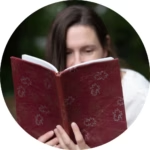When children grow up in a multilingual household, translanguaging in the classroom can lead to more achievement in learning. Translanguaging is exhibited when a multilingual speaker utilizes more than one of the languages they know. In the classroom, this can be observed when Dual Language Learning (DLL) students combine words from their home languages with English. Research shows that translanguaging supports academic development, because a student’s home language scaffolds the child’s learning experience. Language and overall cognitive development are intertwined.
How Does Translanguaging Work?
A multilingual speaker is translanguaging when they use “two or more language varieties in a flexible way—not separated—to make sense of their lives.” It is an additive approach to language acquisition which honors the complexities of both language learning and cognitive development. Translanguaging does not require students to create artificial boundaries between the languages they know or are learning. Students are able to use all their language skills in order to support learning. The process allows students to increase “their English proficiency by enabling them to make connections between their home language(s) and English,” as well as help them understand other subjects.
Many schools are beginning to implement translanguaging as a pedagogy, especially in bilingual programs. Laura Hamman, Emeline Beck, and Aubrey Donaldson, the authors of A Pedagogy for Translanguaging, offer fellow educators three guiding principles to direct their approach:
- Translanguaging pedagogies should be purposefully designed and implemented.
The authors encourage schools to plan a flexible approach that allows for translanguaging within subject areas. - Translanguaging pedagogies should promote interaction and inclusion, drawing upon what students know individually and collectively.
- The authors encourage educators to create spaces where peer-to-peer interaction is encouraged and all students are welcomed.
- Translanguaging pedagogies should enrich learning across all of the languages in a student’s repertoire.
- The authors note that DLL students’ languages are interdependent and skills acquired in one language can transfer to the other language.
The opinions expressed in Montessori Life are those of the authors and do not necessarily represent the position of AMS.



